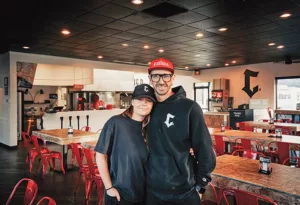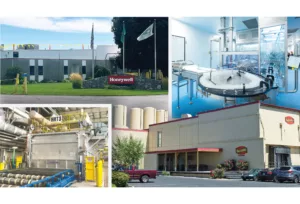
Home » Editor's Notebook: Dive bar debate: Old doesn't always equal historic
Editor's Notebook: Dive bar debate: Old doesn't always equal historic
-
July 14, 2016
.jpg) Old and historic aren’t synonymous, and longevity isn’t always cause for preservation.
Old and historic aren’t synonymous, and longevity isn’t always cause for preservation.
After years of reporting on construction, renovation, and architecture, I’ve arrived at those—arguably cold-hearted—conclusions.
Most recently, I was reminded of this when community leader Luke Baumgarten expressed, via a Facebook post, frustration over apparent plans to tear down the Mayfair Café, at 202 S. Washington downtown, and put in a surface parking lot there.
Luke’s comments seemed to strike a nerve, both among those in agreement with him and his detractors. Some people cried foul on tearing the building down. Others bemoaned more surface parking downtown. A few detractors talked about private-property rights, while others pointed out that that the building was nothing more than a sticky, stinky, old dive bar. The last point is indisputable.
When I finished reading the virtual conversation, I left it thinking one can make a logical argument that a parking lot is a higher and better use for that property.
What I learned, though, is that lots of people still harbor resentments over the demolition of the Rookery Block buildings.
In the early 2000s, developers negotiated to buy those buildings with aspirations of building a high-rise office building on the block, which is bordered by Stevens and Howard streets and Sprague and Riverside avenues. A high-rise never penciled out, and the owner decided to level the buildings and put in a parking lot.
Renovation might have been a better alternative, but the owner didn’t have any interest in taking on such a project, and nobody else stepped forward with a plan that would work. I’d been in those buildings—they looked a lot better on the outside than they did inside, and the exteriors weren’t that great—and didn’t bemoan their loss at the time.
That said, I might not be in business journalism today if more buildings went the way of the Rookery.
My early reporting days coincided with the fascinating rebirth of downtown Spokane.
I started at the Journal around the time of the River Park Square renovation and in an era where developer Rob Brewster was viewed as visionary for finding uses for the Holley Mason Building, interpreted to be a new way of thinking about the spaces we occupy.
I watched and reported as Walt and Karen Worthy breathed new life into the Davenport Hotel, Steve Schmautz revived the American Legion Building, and Dan Spalding kicked off rehab work along East Main Avenue at the east end of downtown, on what now might be the coolest block in Spokane. The Fox Theater renovation wasn’t far behind.
For a business reporter, it proved to be fascinating work, and I developed an appreciation for architecture and preservation.
But let’s be realistic.
If the issue is that too much of our downtown is covered in surface parking, let’s have that conversation. If the argument is that buildings shouldn’t be torn down just because they’re old, that’s a tougher sell.
Old doesn’t equal historic.
Latest News
Related Articles




_web.webp?t=1764835652)